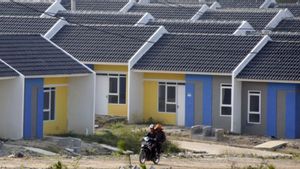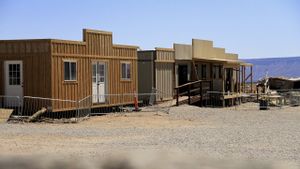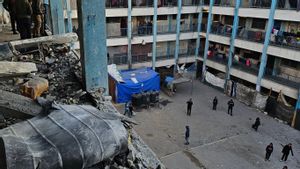YOGYAKARTA - Everyone definitely wants to have an ideal house that their family enjoys. However, there are still many Indonesians who live in uninhabitable houses (RTHL). Even though your house from outside looks fine, there may be criteria for uninhabitable houses in your residence.
In 2021, there will be 39.1% of households in Indonesia that are not livable. Until now, the government continues to strive to overcome the problems of uninhabitable houses in various regions, as stipulated in the Regulation of the Minister of Public Works and Public Housing Number 13/PRT/M/2016 concerning Self-Help Housing Stimulant Assistance.
Factors that make a house called habitable or not only from the structure of the building. However, the assessment is also seen from the factor of supporting facilities to the area of the building. So what are the criteria for uninhabitable houses that must be understood by the community.
Houses that do not meet building security standards, sufficient minimum size, and the health of residents are known as Uninhabitable Houses or abbreviated as RTLH. On the other hand, houses are considered habitable when meeting building security standards, adequate minimum size, and the health of residents in accordance with the explanation given in Article 24 letter a of the Consumer and User Protection Law (UU PKP).
The alternative definition of RTLH is a place to live that does not meet the requirements both physically and mentally. Physical requirements involve the ability of the house to provide shelter for its residents, while in terms of mentality, the house is able to provide comfort for its residents.
Here are some criteria for uninhabitable houses that you need to know. Information can be an insight or reference when you are going to buy new properties or residences.
The first criterion of an uninhabitable house is having a vulnerable building foundation. In general, a one-story house should have a foundation that reaches a depth of more than 45 cm below the ground level as an optimal standard.
Ideally, the foundation of the house needs to be connected to a beam or slope to provide additional strength to withstand the weight of the construction, so that it is safe from natural disaster threats such as earthquakes. Houses that stand on the ground with soft slopes or character are also included in the RTLH criteria.
Another factor that affects the criteria for uninhabitable houses, namely from the materials used in their construction. Is the material flammable, easily cracked, having leak problems, or threatening the health and safety of its residents?
Materials that are vulnerable to the above risks are bamboo, wood, asbestos, PVC, to the use of materials such as straw and ijuk. If you still use such materials, it is concluded that the house has not met the standards set by the Regulation of the Minister of Public Works and Public Housing Number 13/PRT/M/2016.
Residentials that are according to the standard of habitability should have a room with a minimum size of 7.2 to 12 square meters per person. If there are four people living in one residence, then the minimum size of the house is 28.8 square meters.
In order to be categorized as a proper residence, at least 10 percent of the room area must receive natural light and 5 percent must be allocated for air circulation channels.
If the proportion is less than that number, the quality of air circulation and lighting in the house is considered low or not good. The position of the house should also face the east or west in line with the direction of the sun, so that it gets natural lighting.
In addition to the construction aspect and the type of material, the availability of basic facilities is also included in the criteria for livable houses or not. This basic facility includes utilities, electricity circuits, and access to clean water supply in the home.
At a minimum, a residence is expected to have an electricity supply of around 450 VA. In connection with water supply, ideally the residential area should be connected to the PDAM clean water network or have alternative clean water sources such as wells. In addition, the water must be clear, does not emit a pungent aroma, and does not feel strange.
اقرأ أيضا:
Environmental aspects and residential conditions can also be the main assessment in determining whether the house is a proper residence or not. Is the house able to guarantee the health and safety of its residents in the long term?
If the house is located in an area that is often affected by flooding, the house will be considered unfit for habitation. In addition to these considerations, also make sure that the home environment is safe and there is minimal risk of crime.
Those are some criteria for uninhabitable houses (RTHL) that must be known by the public. To overcome the problem of uninhabitable housing, the government through the Ministry of PUPR has implemented a number of programs related to the provision and subsidies for property purchases.
Stay up to date with the latest domestic and other overseas news on VOI. You present the latest and most updated nationally and internationally.
The English, Chinese, Japanese, Arabic, and French versions are automatically generated by the AI. So there may still be inaccuracies in translating, please always see Indonesian as our main language. (system supported by DigitalSiber.id)
















